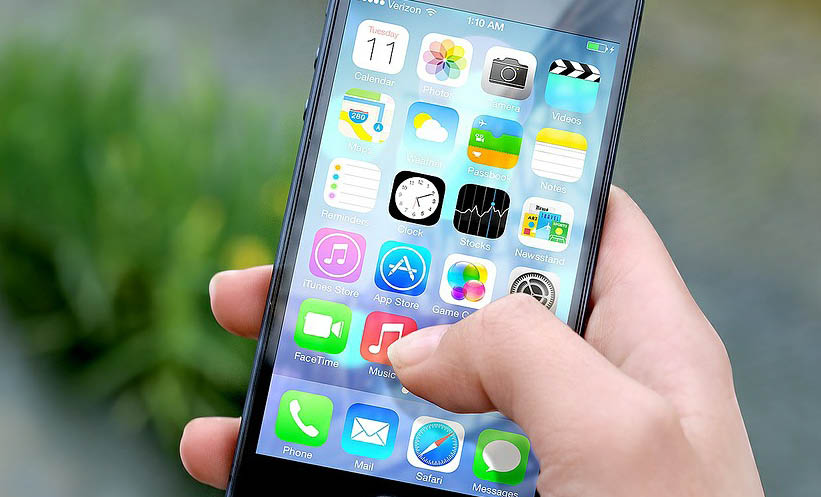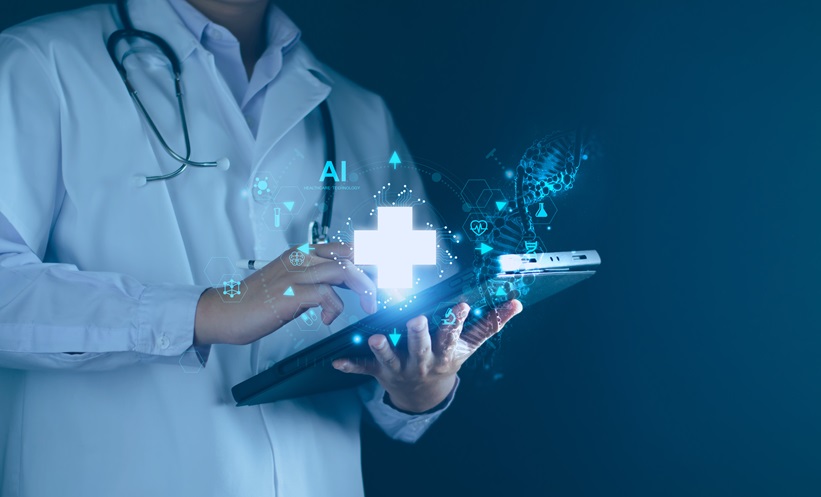Written by James Coker | Senior Editorial Assistant, European Medical Journal | @EMJJamesCoker
![]()
The opportunity for patients to manage their own healthcare needs has grown exponentially in recent years due to self-management devices and the accessibility of vast amounts of information through the internet. Yet the availability and awareness of this opportunity and the ability to properly utilise this phenomena amongst patients needs to be reviewed to fully utilise the opportunities provided by modern technological advances. The growth of this field has also raised the issue of a potential conflict between the traditional doctor–patient relationship and patients relying on e-health technologies. However, the reality of the modern age is that the two should work in tandem, and healthcare professionals need to view patient self-management technologies as opportunities that supplement the advice and treatment they give to patients, rather than as a competing interest. In fact, for patients to take full advantage of the tools at their disposal, they require physicians to guide and recommend the correct usage of these techniques. Health literacy in general must be improved, particularly among socially disadvantaged groups, for this to work as well as it possibly can.
The idea of enabling patients who wish to do so taking as much control as possible over their own health requirements is beneficial for society as a whole, not only from a strictly clinical point of view, but also with regard to individual autonomy. Ms Julia Amann, University of Lucerne, Lucerne, Switzerland, whose research focusses on open innovation communities in healthcare believes that, from an ethical point of view, it is essential that patients are taught autonomy. “It is really important to give patients the opportunity to take on a more active role in managing their health,” she said. Ms Amann also wrote the paper entitled: ‘Democratising Healthcare: The Role of eHealth Technologies in Driving Patient Participation’,1 which was published in EMJ Innovations 1.1 in 2017.
The opportunities offered by modern technology makes this process more possible. Self-management devices come in a variety of forms, from general health management, such as heart rate tracking and step counters, to devices that control specific diseases, which are often created by the patients themselves. Dr Helena Canhão, CEDOC, School of Medicine, NOVA University of Lisbon, Lisbon, Portugal, who has also contributed a paper to the European Medical Journal entitled: ‘Revolutionising Healthcare by Empowering Patients to Innovate’,2 helped set up the online platform Patient Innovation,3 which allows patients who have created innovative solutions to share them with others.
Dr Canhão explained that when the Patient Innovation platform was first developed, there was a low dissemination into the patient population and users experienced resistance to their developed solutions. “At the same time, we started to find some interesting cases, with people improving their quality of life, even saving their lives. And some of these solutions could be generalised, helping many others,” she said. The platform allows for free sharing of ideas and is multilingual with open access, therefore acting as a successful host of such solutions. Discussing the possible drawbacks, Dr Canhão said: “we do need to be careful about safety and other less adequate purposes; thus, when an innovator posts a solution, it is kept on hold, the medical team review it, and it is only published online after clearance.”
The growth of this platform, which was only launched in 2014, demonstrates the sheer scale of self-management device creation. “We have around 60,000 users, 800 solutions published after medical screening, and contributors from 50 countries. The solutions cover a bunch of different diseases, activities, locations, symptoms, strategies, and therapies. Thus, we are quite successful in its implementation. We also were granted and received awards and recognition from different and reputable institutions, and our advisory board and supporters are distinguishable individuals and scientists. In the future, we want to help more patients in sharing and developing their solutions,” described Dr Canhão.
Ms Amann has also experienced the great innovative abilities of patients to create technologies specific to their needs and conditions and described how she recently gave a lecture on patient-driven innovation as part of the Health Sciences Master’s programme at the University of Lucerne, in which the class was asked to research patient innovation. She explained how it was amazing to see what the class came up with given that the group included people from lots of different backgrounds and different countries. Ms Amann concluded: “we have to consider that being a patient is not a full-time profession. If you have a professional background you have a knowledge of the field, so if you apply that knowledge to your own health condition, of course that can make amazing health solutions.”
Despite this growth, it is vitally important that self-management technology is not seen as a replacement for the traditional doctor–patient consultation, but rather as a way of harnessing it, according to Ms Amann. She expressed: “For me personally, these technologies are really there to support the relationship, not replace it. So, I think a future where technologies replace healthcare professionals and patients interacting would not be a future that we want. I think technologies can help us make [healthcare] more efficient, but of course healthcare systems also need to be responsive to new forms of expertise and I certainly think there is a lot of potential. We do not know yet how we can harness this potential and how we can integrate it, but I would not say it could ever replace face-to-face consultation in healthcare.”
One barrier to more patients utilising the tools available is the lack of awareness and a reluctance, on the part of some healthcare professionals, to guide patients in the effective use of these technologies. Getting more physicians on board in this sense is vital to the better utilisation of patient self-management technologies alongside traditional doctor–patient consultations. This problem is something that Dr Canhão is well aware of. “When we did a survey of 500 rare disease patients and caregivers, 40 (8%) of them developed something new and they reported that their quality of life improved with such solutions. However, only 5% shared that solution with the healthcare professionals. What we concluded is that innovations developed by patients and caregivers are not yet a matter of discussion during medical encounters,” she said.
Being more willing and able to give positive guidance about self-management technologies is also something that Ms Amann would like to see more of. She believes it may be of great benefit to patients because currently they do not know if the information provided by their apps or online programmes is correct. “So, I think professional advice and recommendation could be extremely helpful because there is a lot of valuable information that is provided by patients online, including patients who share their own experiences and maybe also recommend apps. I think combining both the medical and the peer-to-peer methods is the way forward,” elucidated Ms Amann.
It is clear, therefore, that the doctor–patient relationship is crucial to the goal of improved and more widespread use of self-management technologies. In fact, technologies should be seen as a way of fostering and supplementing the relationship rather than potentially harming it. “Discussing self-management, patient needs, and self-development of disease solutions can be a great start to improving the patient–physician relationship,” commented Dr Canhão.
Similarly, Ms Amann believes physicians need to be more aware of and to not underestimate the abilities of patients to use information and devices to help manage their own health. “I think training healthcare professionals to deal with patients [is important], because if a patient goes to look for information and help online and uses new technologies, that means the patient is engaged and the patient wants to do something, so it is important not to undermine these efforts but to support them and collaborate, and really use technologies to build the relationship,” she said. Helping the patients to understand how to utilise the technologies and vast information at their disposal is key in this respect. Ms Amann described how those working in medical professions are challenged by ‘the google patients’ who use the internet to find information on their condition from untrustworthy sources. “So, it is really about helping, like building the relationship and then using technologies to enhance the relationship,” she said.
Fostering collaboration between the different healthcare providers is something that Ms Amann is especially passionate about. She sees the internet and online communities as an important forum for communication, partnership, and education. Again, this follows the theme of utilising modern technologies to enhance the relationship between patients and healthcare professionals. “It is about engaging with different stakeholders, and of course in healthcare, everybody has their priorities, expectations, and different goals, and even though everything is patient-centred, I think everybody has a different idea of what patient-centred is and how we can achieve it. That is not just across disciplines, but also within disciplines,” Ms Amann emphasised. She continued to discuss the potential of online communities in reducing the barriers to patient education.
Improving health literacy is essential to ensure patients can properly utilise the various technologies available to them. “Health education and literacy are crucial,” said Dr Canhão. “It is important to understand the disease and treatment options, to increase treatment adherence, and with the advent of information communication technologies, people need to be informatics-included. Illiteracy increases gaps and inequities in health and access to healthcare.”
An excellent way of educating patients is by attempting to include them in the creation of new devices and technologies as much as possible. “I think it is really important to educate patients and equip them with the tools and skills so that they can take on a more active role. Ideally, I think it should be by involving them in creating these technologies, because if you’re involved in the development, first of all you feel part of it, and you also learn to understand something from the inside out,” argued Ms Amann.
Health literacy is a particular problem in socially disadvantaged patients who are the very people that are often most in need of these technologies. Typically, despite efforts by researchers in that direction, it is very difficult to involve these types of patients in the development of health technologies, and thereby understand their specific needs and requirements. “Of course, to a certain extent it is also difficult to [include socially disadvantaged patients], but particularly those groups are often at risk, like individuals who have lower health literacy,” stated Ms Amann. “And I think they are often left out when it comes to the development of apps, and the groups that you want to reach with self-management apps are the ones that are hardest to reach.” She stated that if patients from socially disadvantaged groups are involved in the development of these technologies, they will understand the motivation behind the technology and that the new advances will be of benefit to them.
She added: “I think what we see, speaking from my personal experience, is that patients who are involved are often highly educated, they can afford the time to be on patient panels and join focus groups, but when you think about the disadvantaged groups, they often do not have the opportunity, and that means that they are often left behind. Of course, you will have different needs from these groups, so I think it is very important to find ways to integrate them more actively.”
Patient self-management technologies therefore hold massive potential for improving patients’ health and providing support to physicians. Steps in patient literacy, particularly for disadvantaged social groups, need to be taken to utilise these technologies to their maximum effect, and healthcare professionals can play a huge role in this process.
References
- Amann J. Democratising Healthcare: The Role of eHealth Technologies in Driving Patient Participation. EMJ Innov. 2017;1[1]:40-6.
- Canhão H et al. Revolutionising Healthcare by Empowering Patients to Innovate. EMJ Innov. 2017;1[1]:31-4.
- Patient Innovation. 2016. Available at: https://patient-innovation.com/. Last accessed: 30 October 2017.








